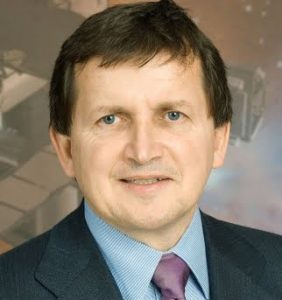Károly Simonyi (Charles Simonyi)
He first came into contact with computers in high school, when he had the opportunity to learn how to program a Soviet Ural-2 computer; by the age of 16 he was already creating compilers, and one of his programs was even purchased by a state-owned company. He graduated in 1966 and then left for Denmark, where he worked as a programmer for the first Danish computer company, RC Regnecetralen.
In 1968, he went to the United States; he enrolled at the University of California, Berkeley, where he graduated with a degree in engineering mathematics, specializing in statistics and mathematics, in 1972. In 1977, he received a doctorate in computer science from Stanford University (Stanford, California), where he wrote his dissertation on his grand plan, metaprogramming to increase the efficiency of large-scale software projects.
In 1972, he joined Xerox's Palo Alto Research Center (PARC) alongside Alan Kay and Robert Metcalfe. His first WYSIWYG word processor, Bravo, developed in 1974 with Butler Lampson, ran on Xerox's Alto personal computer.
In 1980, at Metcalfe's suggestion, he approached Bill Gates, who offered him a job at Microsoft. He joined Microsoft as a senior developer in 1981. He became a U.S. citizen in 1982. During his two decades at Microsoft, he led the development of the Word word processor and the Excel spreadsheet, as well as the latter's predecessor, Multiplan, as part of the Microsoft Office suite. To make development work more efficient, he introduced the (then) new object-oriented method of programming, which he further refined by introducing the "Hungarian Notation," a programming notation system named after his origins that has since become standard. - This is where he founded his billion-dollar fortune, from which he generously supports science and culture.
In 2002, he unexpectedly left Microsoft and, together with his business partner, Gregor Kiczales, a professor at the University of British Columbia, founded his own company, Intentional Software Corporation (ISC). He founded the company to utilize intentional programming, a language-independent software development method developed at Microsoft to simplify programming. Microsoft did not see the method as imaginative at the time, but gave its blessing to the founding of the company; eventually, in 2017, it acquired Intentional Software to strengthen the development of its programs, including the Office 365 software package.
Member of the governing bodies of several internationally renowned institutions, professor; honorary doctor of the University of Pécs and the Julliard School of Music. Member of the National Academy of Sciences (USA), member of the American Academy of the Arts and Sciences (USA). In 2004 he was elected an external member of the Hungarian Academy of Sciences.
Holder of 11 patents.
The world's fifth space tourist (see details below).
His main awards: George Washington Award (Hungarian American Foundation, 2002); Neumann Plaque (NJSZT, 2003); Grand Cross of the Order of Merit of the Republic of Hungary (2007).
- Wikipedia (English)
- Wikipedia (Hungarian)
- The father of Word and Excel
- Microsoft (English Wikipedia)
- Intentional Software Corporation (press release)
- Rearview mirror - Charles Simonyi 70 years old
- Charles Simonyi was born 70 years ago - videos: visit to Puskás Távközl. Techn.; footage from the International Space Station; his lecture on space travel; The History of Microsoft -- The Charles Simonyi Story
- Charles Simonyi the inventor, the meta-traveler
- interview (World of Nature, 2010.)
- Married, has two children (2019 report).
- His father, Károly Simonyi, is a Kossuth and State Prize-winning scientist who, with his book trilogy Theoretical Electricity – Electricity – Electron Physics, established and defined electrical engineering sciences and education for 4 decades. He was a legendary teacher for generations of engineers.
- His philanthropic activities are well known. Between 2000 and 2012, he supported the work of outstanding Hungarian scientists by establishing the Charles Simonyi Research Fellowship. He founded three professorships: at the University of Oxford, Stanford University, and the Institute for Advanced Study in Princeton; to the latter, in memory of his father, he also donated $25 million in 2005. In 2004, he established a $50 million charitable fund to boost cultural, scientific, and educational life in the Seattle area. In 2017, he contributed $5 million to the construction of a new building for the Department of Computer Science at the University of Washington.
- He has been a fan of flying since childhood. As an experienced pilot, he was among the first to apply for the program that allowed civilian space travel. He has been in space twice: the first time between April 7 and 21, 2007, and the second time from March 26 to April 8, 2009, he was on the International Space Station. As of April 2009, he is the second Hungarian-born astronaut, and also the fifth and seventh space tourist. (He launched aboard the Russian Soyuz spacecraft in American colors, but his badge also had the Hungarian flag.)
- In 2008, he received the Blue Ribbon Award for Győr-Moson-Sopron County (Nemeskér).
Created: 2019.08.26. 17:00
Last modified: 2024.05.31. 17:57

